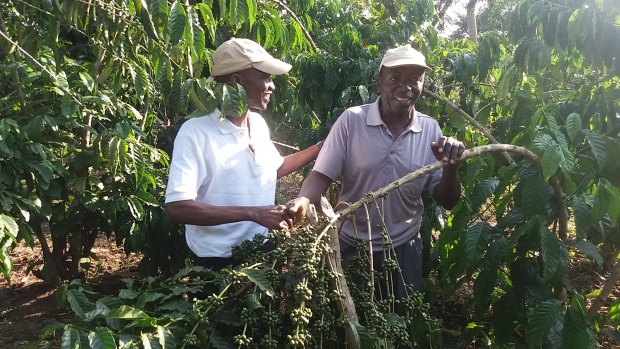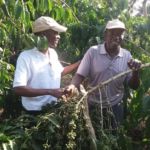Stepwise Approach to Implement CSA Practices
By implementing climate-smart agriculture practices one step at a time, coffee farmers can improve their coffee quality and productivity with the resources they have.
Status: Curently being tested and implemented by IITA and HRNS in Luwero, Uganda.

Concepto
Climate is becoming more variable and the effects of climate change adversely affects the livelihoods of smallholder farmers. Agricultural production is majorly by small scale farmers that are resource constrained to adopt good agricultural and climate smart agriculture (CSA) practices in their entirety. The climate smart investment pathway (Stepwise approach) breaks down CSA practices into more manageable subsets of practices to efficiently increase the yield. In addition, it is site-specific, so that practices are adapted to priorities and constraints of a specific location.
Drawbacks
Scientifically robust validation of stepwise in form of demonstration plots require a minimum of 3-years to be certain of research-based findings on perennial crops such as coffee or perennial based systems.
Costs
30,000 US-Dollars
Recommended Activities
The implementation consists of four steps. The practices of step one includes cultural weed control and de-suckering. Step two includes all the practices of step one, adding manure application, pruning and cultural control of pests and diseases. Step three includes step one, step two, and mulching; step four is all the previous steps plus the application of organig or inorganic fertilizer and pesticides.

Preliminary feedback:
Initial Stepwise participating farmers’ feedback from the central Uganda demonstration sites is promising. Stepwise is noted as one of the novel approaches to increasing investment in coffee farming systems by the Uganda National Coffee Platform Financial Viability of Coffee Farming Study Report, October 2018. The report states that initial observations from Stepwise demonstration plots in Central Uganda managed by IITA impact Partner Hanns R. Neumann Stiftung (HRNS) “show high yields in step 4.” Preliminary data analysis suggests a decreased incidence of Black Coffee Twig Borer. Local Government partners are encouraging further expansion of Stepwise pilots.
Experience shared by the farmers which were visited showed that; in step one severe flower abortion was experienced due to the drought and high level of pests and diseases. In step two, the coffee plants were observed to be more vegetative and healthier due to manure application. In step three, where the coffee was mulched, fewer flowers had aborted despite the drought and the coffee trees looked healthier with dark green color leaves. In step four the coffee trees seemed not to be attacked by pests and diseases and have very high productivity.
Further reading:
- Have something to add to this tool description? Leave a comment!
- Interested in applying this tool? Look for pictures, case studies and info sheets below for step-by-step instructions to get you started.
Author: IITA


Dejar comentarios
0 comentarios